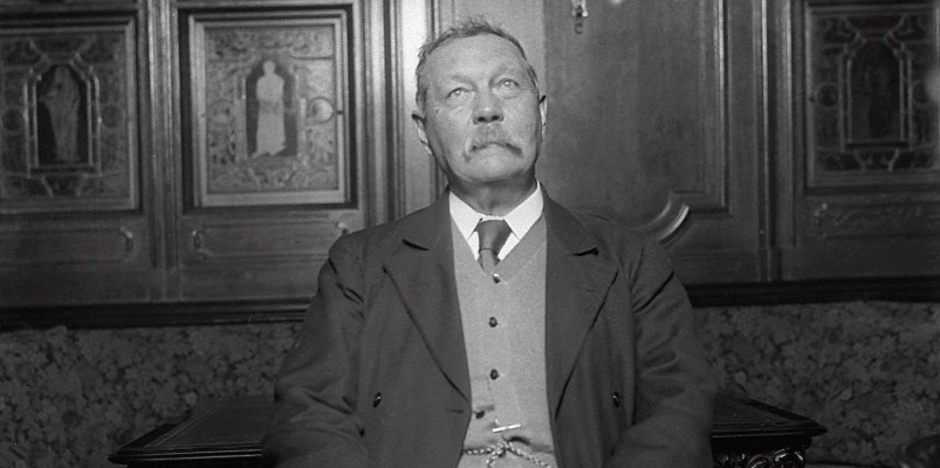I think 7 July in Scotland should honour a genius with Doyle Day.
Sir Arthur Ignatius Conan Doyle KStJ DL (22 May 1859 – 7 July 1930) was a Scottish writer, who created the character Sherlock Holmes. Originally a physician, in 1887 he published A Study in Scarlet, the first of four novels and more than fifty short stories about Holmes and Dr. Watson. The Sherlock Holmes stories are generally considered milestones in the field of crime fiction. He was a prolific writer; his works include fantasy and science fiction stories about Professor Challenger and humorous stories about the Napoleonic soldier Brigadier Gerard. One of Doyle’s early short stories, “J. Habakuk Jephson’s Statement”, helped to popularise the mystery of the Mary Celeste.
Doyle was born on 22 May 1859 at 11 Picardy Place, Edinburgh, Scotland. His father, Charles Altamont Doyle, was born in England, of Irish Catholic descent and his mother, Mary (née Foley), was Irish Catholic. His parents married in 1855. In 1864 the family dispersed because of Charles’s growing alcoholism and the children were temporarily housed across Edinburgh. In 1867, the family came together again and lived in squalid tenement flats at 3 Sciennes Place. Doyle’s father died in 1893, in the Crichton Royal, Dumfries, after many years of psychiatric illness. Now supported by wealthy uncles, Doyle was sent to England, at the Jesuit preparatory school Hodder Place, Stonyhurst in Lancashire at the age of nine. He then went on to Stonyhurst College until 1875. Doyle commented later in his life that the academic system could only be excused “on the plea that any exercise, however stupid in itself, forms a sort of mental dumbbell by which one can improve one’s mind.” He also found it harsh, citing that instead of compassion and warmth, it favoured the threat of corporal punishment and ritual humiliation. Much like sections of my own schooling, particularly with the Holy Mothers (Nuns). From 1875 to 1876, he was educated at a Jesuit school in Austria. His family decided that he would spend a year there with the objective of perfecting his German. He later rejected the catholic faith and became an agnostic.
In 1885 he married Louisa Hawkins (1857–1906). She was the youngest daughter of J. Hawkins, of Minsterworth, Gloucestershire, and the sister of one of Doyle’s patients. Louisa suffered from tuberculosis. In 1907 he married again; Jean Elizabeth Leckie (1874–1940), whom he had first met and fallen in love with in 1897. He had maintained a platonic relationship with Jean while his first wife was still alive, out of loyalty to her. Jean died in London. Doyle fathered five children. All five children died without issue. Doyle was found clutching his chest in the hall of Windlesham Manor, his house in Crowborough, East Sussex, on 7 July 1930. He died of a heart attack at the age of 71. His last words were directed toward his then wife: “You are wonderful.” A statue honours Doyle at Crowborough Cross in Crowborough, where he lived for 23 years. There is a statue of Sherlock Holmes in Picardy Place, Edinburgh, close to the house where Doyle was born. You will find The Conan Doyle pub near Picardy Place, Cathedral Lane and Queens Street – near the Catholic Cathedral Edinburgh, a traditional pub of unique character, revered for its eclectic range of real ales and its quality pub food. A unique city centre pub with a rich history
HE DIED 7 July 1930, I think Scotland should honour this genius with Doyle Day. PAUL MCLEAN

